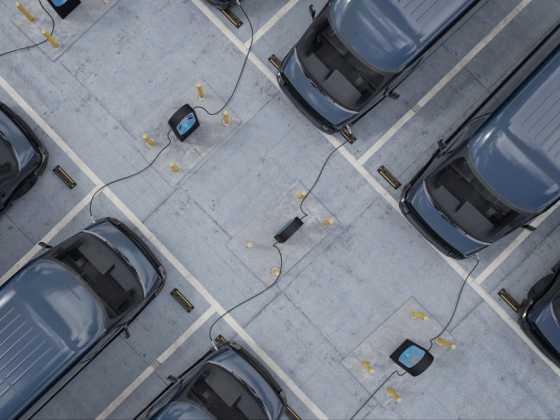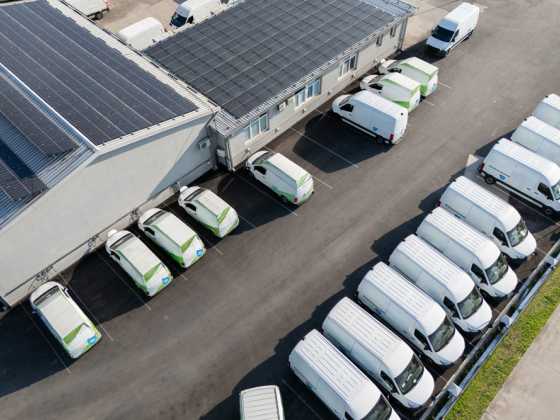Delivering the right EV charging infrastructure

Local authorities have a lot to consider when installing an electric vehicle charging infrastructure, from prioritisation of funding to the process of deciding how and where drivers will need to charge. Ben Allan from Field Dynamics explains how a new tool is helping local authorities deal with the challenges of installing a successful public charging network
The EV marketplace is noisy and constantly changing, with the only certainty being that mass EV adoption is on its way. For local authorities facing the complex challenges involved with delivering electric vehicle charging infrastructure, it can feel like an impossible task: no rule book and very little guidance. Over the coming months and years Local Authorities are going to have to balance an ever-louder clamour for more EV charging infrastructure with limited funds and squeezed resources.
As not all EV drivers are the same – so logically the provision of EV charging support by Local Authorities should vary also. With Boris Johnson’s 10-point plan pledging more support for infrastructure and the revised 2030 ICE ban, the need to create a balanced and fair master plan is more important than ever. But as yet, a standardised approach to such a plan has not been developed. There is so much to take into consideration from prioritisation of funding to the process of deciding how and where drivers will need the charging infrastructure placed. Existing data is varied, complex and often conflicting and more often than not, it is not holistic in its approach. For example, a recent study undertaken an published by net-zero data consultancy, Field Dynamics, in partnership with Zap Map suggests that 90% of households in Great Britain that rely on public charging for electric vehicles are not within close walking distance or a charger. It highlights the importance of understanding the location of the residents who will rely on public charging before planning residential electric vehicle charging sites. The research demonstrates how a better residential charging service can be achieved by siting chargers in more focussed locations and how surprisingly few chargers will be needed. Such considerations are often overlooked and as a result, uninformed and inadequate planning decisions can be made.
Local Authorities will need to create a whole portfolio of EV strategies and policies as well as business cases and funding applications. All of this will be reliant on a consistent and robust foundation of evidence that can be relied upon. The challenge is building up the expertise to create this evidence foundation, before facing the challenge of actually creating it.
A toolkit
To support authorities in this position, Field Dynamics, has developed JumpStart: a structured and data-led approach that builds an evidence foundation for individual authorities. Field Dynamics works with local authorities to combine advanced national datasets, cloud services and local knowledge, through a series of objective analysis sessions, resulting in the authority building a planning and implementation tool set that can be used both at the point of operational hand-off and as a vital reference resource to review processes.
The tool set helps authorities and their advisors to create strong data-led policy, gain stakeholder support, secure government funding and engage with external suppliers.
JumpStart provides local authorities with evidence and data that helps them predict future take up and understand the make-up of their local area. It enables them to realise the true scale of the challenge ahead of them and models potential infrastructure sites that align with their overall goals.
A five step approach
The five-step approach goes through methodical stages to achieve the ultimate “evidence stack”:
Step 1 – The first step focuses on defining a Planning Horizon and how to substantiate this with solid evidence. Authorities are guided through the different public tools available to understand how different scenarios may impact the demands on their infrastructure.
Step 2 – The second step builds on the first by modelling the Scale of Challenge facing the local authority. This is based on the behaviours and needs of the current residents and gives the organisation a view of what EV resources they will need in preparation for the Planning Horizon.
Step 3 – The third step creates a set of Demand Zones: recognising that not all areas within a region require the same level of support. For example, suburban areas with high levels of off-street parking will require considerably less support than dense areas with predominantly on-street parking. This stage is supported by advanced data analytics that substantiate the difference between zone classifications.
Step 4 – By this stage there will be an understanding of how many electric vehicles the local authority is aiming to support, when and where. Therefore, the fourth step encourages local authorities to select ideal EV charging locations within the Demand Zones for the allocated services. Drawing on considerable local knowledge and interaction with multiple stakeholders, Field Dynamics implement their CatchmentModeller solution to agree the optimal sites within the different zones for the location of the EV charging services.
Step 5 – The final step is a combination of all the effort and analysis of the preceding stages of the approach. The result is a report and a customised portfolio of data sets, which presents the substantiated decisions and assessments that can be relied upon for future policy and strategy making. The portfolio of crucial data sets can be retained and called upon for ongoing review.
The zone methodology
The proposed approach of breaking down a town or city down into an initial set of areas or zones as a key part of recognising demand zones has been explored in depth by Field Dynamics. This methodology encourages Local Authorities to view their towns and cities as collections of complex and distinct zones – each with their own characteristics – rather than single entities. By recognising the distinctive attributes of defined zones, justification of funding to support EV charging strategies is made clearer for both private and public sector investment decisions.
A “zone” identifies one area from another for different legal and financial approaches to charging infrastructure. The key to this form of zoning is to understand how to minimise council cost and maximise commercial investment. The proposed approach leads to five key zones: Commercial; Suburban; Public Need; Visitor; and Minimal Need.
Once these zones have been identified they can be published as a plan – in a similar way to a council’s Local Development Plan (LDP) so that residents, CPOs and other stakeholders can understand the strategic direction and engage from an informed position.
To illustrate the proposed approach, Warwick has been selected as a “real-life”, representative town with a wide range of residential housing, businesses and industries. In the case of Warwick, Commercial zoning makes up 5% of the town, Suburban zoning 16%, Public Need zoning 14%, Visitor zoning 20% and Minimal Need zoning 45%. It shows that the vast majority (61%) of the town has no need for charging infrastructure investment but provides clear focus and offers a logical approach to informed investment decisions.
The review of conurbation zoning is a key step in the JumpStart programme, which Field Dynamics Managing Director, Ben Allan describes as a “methodical approach which prepares local authorities for the complex process ahead of them and provides them with the tools needed to develop a strategy, apply for grants and create relationships with commercial partnerships.”
He continues by adding that “the data output from this approach can be used to kickstart the EV charging infrastructure planning process and tweak the strategy over the long term.”
Local Authorities already using the five step JumpStart approach have commented that all councils should have access to consultancy-led support, such as that offered through the JumpStart programme.






